The boss of MGAC tells Dave Rogers about the problems with partnerships, quantity surveyors, red tape and why he absolutely loves the Elizabeth line
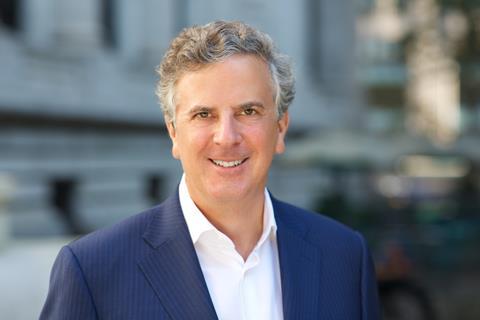
ŌĆ£My parents were a little upset,ŌĆØ Mark Anderson recalls. ŌĆ£Wearing blue jeans and a hard hat was not the vision they had for their college son. I was a very good studentŌĆ”ŌĆØ
The founder and owner of MGAC, the US project manager and cost consultant that has been making waves in the UK recently with a series of acquisitions, had toyed with the idea of going into the church ŌĆō his dad had been a clergyman and he, Mark, thought it might be for him.
He eventually went off the idea but it was a wedding at which his father was officiating that opened up the pathway to a career in construction.
Anderson Sr had just overseen the marriage of the then executive vice-president of a US contractor called Davis Construction, set up in 1966, and which is still going strong today. ŌĆ£I think I can get you a job in construction,ŌĆØ his dad told his son afterwards.
Anderson Jr gave it a go. He found he liked it and embraced the variety of the work. ŌĆ£I started out as a ditch digger.ŌĆØ That was over 40 years ago.
ŌĆ£One of the other aspects I liked is that you spend other peopleŌĆÖs money in lavish ways,ŌĆØ he says. ŌĆ£In 1980, I was making $10/$15 an hour and, if I did overtime, it was $21 an hour. A lot of money back then.ŌĆØ
He eventually set up a construction business in 1989 ŌĆō it is called Rand and still going ŌĆō but moved away from general contracting and into consulting nearly 30 years ago when he formed Mark G Anderson Consultants. He is now the firmŌĆÖs president and CEO.
The G stands for Guthrie and is an ancestral name, with his familyŌĆÖs roots going back to Aberdeen. Two very distant relatives fought and died in the First World War. ŌĆ£Both of them were in the British army.ŌĆØ
The jump to consulting
His move into consulting was driven more by a desire to be his own boss, after a fallout with his partner at the contracting business. ŌĆ£I found myself working till 2am in the morning five, six days a week and being criticised for not working hard enough.ŌĆØ
He says there is a phrase in the US which runs thus: ŌĆ£DonŌĆÖt start a land war in Asia.ŌĆØ It is usually code for ŌĆ£donŌĆÖt bite off more than you can chewŌĆØ and has been attributed to various generals since the Second World War.
On this, Anderson says: ŌĆ£DonŌĆÖt start a land war in Asia ŌĆō and donŌĆÖt be in a business partnership.ŌĆØ
He says partnerships are flawed ŌĆō too many competing interests and, besides, people usually fall out over money.
ŌĆ£Never had a partner in this business,ŌĆØ the 62-year-old says. ŌĆ£ItŌĆÖs just me.ŌĆØ If he got hit by a London bus tomorrow, there is a five-strong executive board to step up.

He says partnerships too often fracture on differences of opinion. ŌĆ£Usually, itŌĆÖs about not having a common vision,ŌĆØ he adds. ŌĆ£Some might want to invest [money], others [want] to take it home.ŌĆØ
Lifestyles can be expensive, he adds. ŌĆ£If I donŌĆÖt make money in a given year, no oneŌĆÖs looking over my shoulder. If I choose to invest all of it in the business, the only person I am accountable to is me.ŌĆØ
Expanding MGAC
Anderson set up MGAC in 1996 and the firm was largely unknown in the UK until it bought 100-strong UK cost consultant RLF in 2021. Last September it bought another UK consultant specialising in project management and cost consulting, picking up the seven-strong Flint & Partners, set up by former Davis Langdon partner Peter Flint.
Making tea at the BBC (and other jobs)
Founded in 1996, MGAC has a turnover of $100m (┬Ż79m) and 350 staff split between 10 offices ŌĆō six in North America and four in the UK. It bought cost consultant RLF, which had been going 140 years, in October 2021 and three years later bought QS and project manager Flint & Partners.
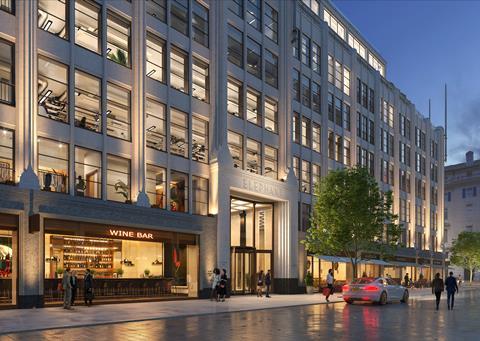
MGACŌĆÖs key UK projects include 318 Oxford Street, the ongoing scheme to turn the former House of Fraser flagship store into a mixed-use scheme, and Eighty Strand, which involved updating a grade II-listed Art Deco building on the Strand into new office space.
It is also working as cost consultant on the Tea Factory scheme in Birmingham, a project to turn the former Typhoo building in the city into a new Midlands headquarters for the BBC.
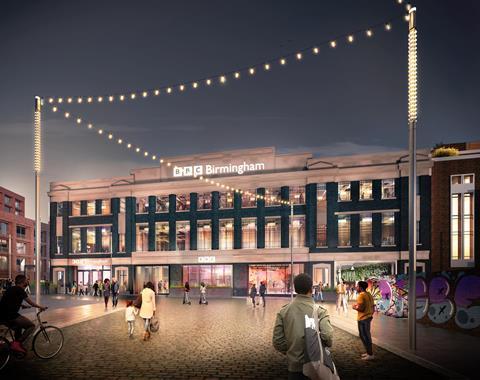
The deals mean that MGAC now has around 110 staff in the UK, with four offices including Brighton, Birmingham and Glasgow.
A further 230 or so people are based across the Atlantic at six offices stretching from its headquarters in Washington DC up to New York and Toronto, across the border in Canada, and across to Seattle and down to San Francisco and Los Angeles on the west coast.
Around half of the UK staff work out of an office in the heart of the Broadgate campus in the City, which sits across from British LandŌĆÖs under-construction 2 Finsbury Avenue being built by Sir Robert McAlpine and designed by Danish practice 3XN.
The quality of what you spend on a building over here is higher. We tend to tear them down after 30 or 40 years in the US
ŌĆ£The quality of what you spend on a building over here is higher,ŌĆØ Anderson says. ŌĆ£We tend to tear them down after 30 or 40 years in the US. There is a really high standard here.ŌĆØ
But what the US may lack in quality, it makes up for in speed. ŌĆ£ItŌĆÖs quite different,ŌĆØ he adds. ŌĆ£We have a 12 to 18-month design process and then construction of 24 months. We do that all the time, thatŌĆÖs just the expectation.ŌĆØ
He and his executive managing director, Ashley OŌĆÖConnor, admit that they have been surprised at how long processes take in the UK. ŌĆ£The speed of business in the US is very different to the UK. ItŌĆÖs much quicker.ŌĆØ
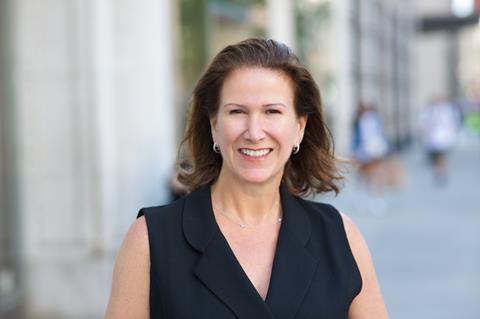
Some of their work has been caught up in the latest red tape row to hit UK construction ŌĆō the problems getting sign-off on schemes under the gateway 2 initiative which have seen a growing call for the government and building safety regulator to get its act together.
ŌĆ£There is more red tape over here, without a doubt,ŌĆØ OŌĆÖConnor, who is based in the Washington office, says. Talking about the issues with gateway 2, she deadpans: ŌĆ£ThereŌĆÖs not apparently much that can be done.ŌĆØ
But one reason why the US can build more quickly is because of its size, Anderson concedes. ŌĆ£We have more space. London is highly congested but in the US there is a lot more open land.ŌĆØ
He reels off a list of places where the firm is working in the US: a multi-billion dollar headquarters building in Nashville, Tennessee, schemes in Texas and California ŌĆō all big places. It is also doing a major scheme in Cleveland.
ŌĆ£We do more business in Ohio than any other state ŌĆō donŌĆÖt ask me why,ŌĆØ he adds. ŌĆ£You can do these really big schemes in lots of places in the US.ŌĆØ
International growth
But the firm has been interested in becoming an international business for a while now and London was an obvious port of call: common language, common laws and customs.
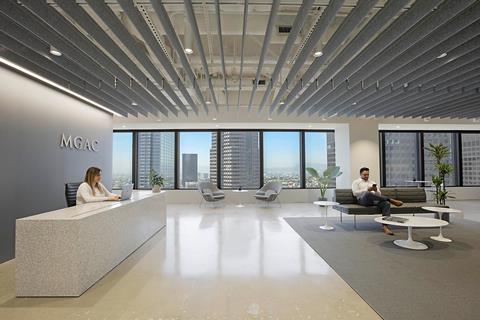
OŌĆÖConnor, who has been with the business for seven years having joined from Aecom, says: ŌĆ£This is a global city and a great jumping-off point for other projects. ItŌĆÖs easier to open an office here if youŌĆÖre an American than, say, Milan. London is so old but it constantly regenerates. I love that.ŌĆØ
There is also another reason why UK firms have been in its crosshairs. Anderson says the US does not really have any quantity surveyors. ŌĆ£When we set up, it was all PM. QS is not really a thing in the US. Cost is more cost consultative in the US.ŌĆØ
The UK methodology of delivering projects is widely accepted around the world
So, why buy UK QS firms then? ŌĆ£WeŌĆÖre an international business. If we were in Kenya, we would be talking about QSs and the UK system of building. As you travel around the world, the UK methodology of delivering projectsŌĆ” I wonŌĆÖt say it is sort of standard ŌĆō but itŌĆÖs widely accepted around the world.ŌĆØ
When MGAC began the process which saw it buy RLF, the firm was initially handed a shortlist of 80 would-be possibles. Anderson says he spoke to around 30 before it was whittled down to five.
Now he is eyeing more. ŌĆ£WeŌĆÖre always looking,ŌĆØ he adds.
Typically, he says it is firms that get in touch with him about a deal ŌĆō not the other way round. So, what do they say? ŌĆ£I have partnership problems. Can I get out and join your firm?ŌĆØ
US vs UK markets
He does worry, though, about the high number of business failures in the industry over here. Since MGAC bought RLF, several high-profile firms have gone under. The most obvious has been ISG, which went down last September.
ŌĆ£We donŌĆÖt have the failures,ŌĆØ he says. ŌĆ£The market is healthier [in the US]. There are more players in it, more competition. They have higher margins on the general contracting side.ŌĆØ
OŌĆÖConnor adds: ŌĆ£I think construction is better regarded in the US than it is in the UK. The perception is that it can be very profitable. Over here, it can be seen as a fragile industry.ŌĆØ
Anderson says the sort of margins he is after are 20% ŌĆō ŌĆ£after all the salaries have been paid and IŌĆÖve been paid. ThatŌĆÖs a good target.ŌĆØ
The firm turns over $100m (┬Ż79m) with around ┬Ż15m of that coming from the UK, where its jobs include working as project and cost manager on the scheme to turn the former House of Fraser on LondonŌĆÖs Oxford Street into mixed use.
Our clients have an expectation that we will walk through fire to get them what they want. We can bring that attitude to the UK and I think thatŌĆÖs a value a lot of people donŌĆÖt see
He thinks this number could double over the next few years as it looks at more work in the public sector, such as hospitals and education, along with commercial and data centre schemes.
He thinks being from overseas is an advantage in the UK market. ŌĆ£Maybe we can look at a different way of solutions, look at things differently. The joke in the US is that I hire a PM so they think about my project while they are cutting the grass ŌĆō so I donŌĆÖt have to think about my project while I am cutting the grass.

ŌĆ£Our clients have an expectation that we will walk through fire to get them what they want. We can bring that attitude to the UK and I think thatŌĆÖs a value a lot of people donŌĆÖt see.ŌĆØ
Before he finishes up, Anderson says he is a big fan of cities: Paris, Istanbul, Chicago, Washington DC. He says the US capital is ŌĆ£manageably sized, on a European scaleŌĆØ.
He likes London, too. He comes over every four to six weeks, usually for a week and stays in a flat in Mayfair while he is here. ŌĆ£London is one of the great cities. ItŌĆÖs very hard to complain about coming to London.ŌĆØ
His favourite building in the capital is the Bloomberg ║┌Č┤╔ńŪ°, but maybe his favourite scheme overall is the Elizabeth line. In fact, he raves about it. ŌĆ£Heck, yeah! ItŌĆÖs brilliant. ItŌĆÖs so quick.ŌĆØ
Maybe this country can do jobs that are the envy of the world after all.



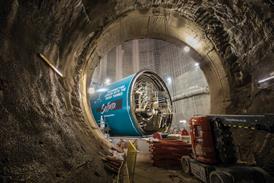








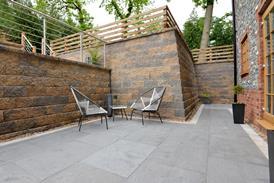


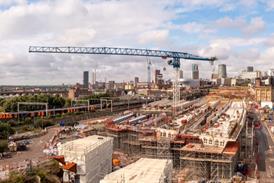
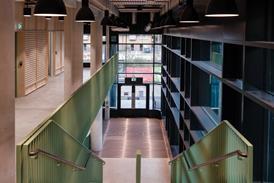










No comments yet